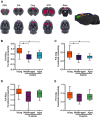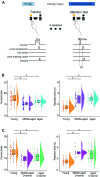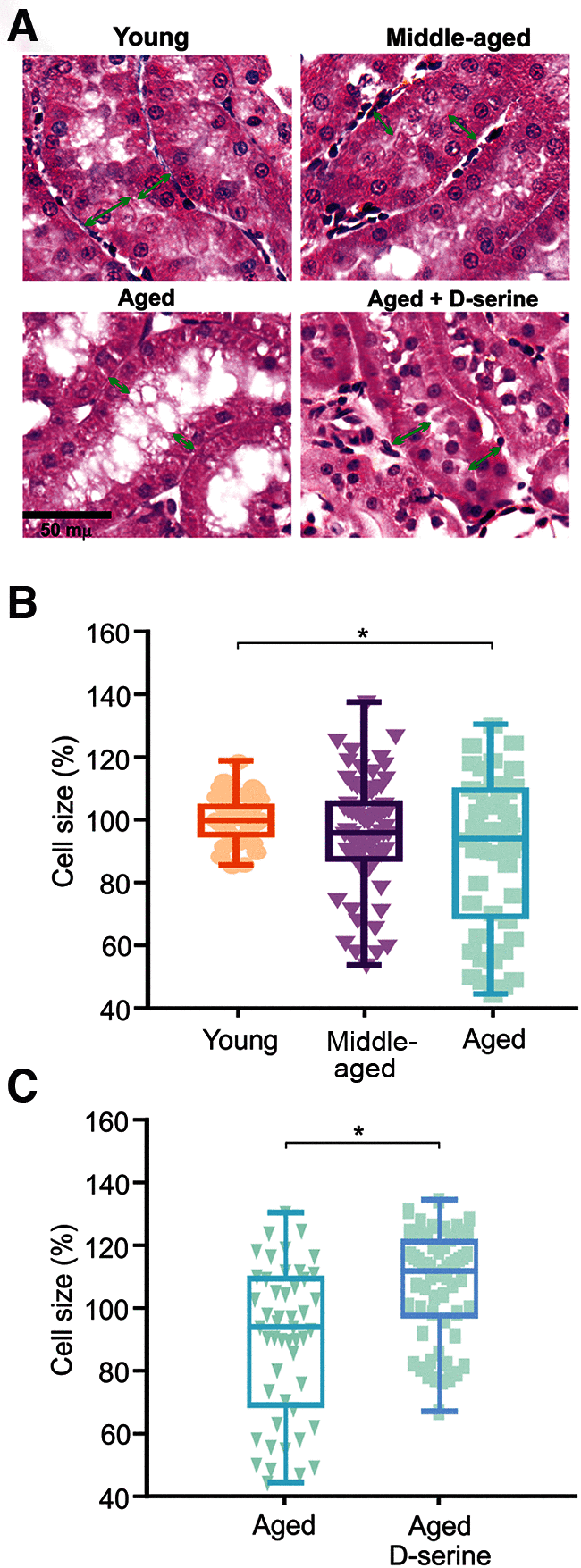AGING-ASSOCIATED COGNITIVE DECLINE IS REVERSED BY D-SERINE SUPPLEMENTATION
- PMID: 35584913
- PMCID: PMC9186414
- DOI: 10.1523/ENEURO.0176-22.2022
AGING-ASSOCIATED COGNITIVE DECLINE IS REVERSED BY D-SERINE SUPPLEMENTATION
Abstract
Brain aging is a natural process that involves structural and functional changes that lead to cognitive decline, even in healthy subjects. This detriment has been associated with N-methyl-D-aspartate receptor (NMDAR) hypofunction due to a reduction in the brain levels of D-serine, the endogenous NMDAR co-agonist. However, it is not clear if D-serine supplementation could be used as an intervention to reduce or reverse age-related brain alterations. In the present work, we aimed to analyze the D-serine effect on aging-associated alterations in cellular and large-scale brain systems that could support cognitive flexibility in rats. We found that D-serine supplementation reverts the age-related decline in cognitive flexibility, frontal dendritic spine density, and partially restored large-scale functional connectivity without inducing nephrotoxicity; instead, D-serine restored the thickness of the renal epithelial cells that were affected by age. Our results suggest that D-serine could be used as a therapeutic target to reverse age-related brain alterations.SIGNIFICANT STATEMENTAge-related behavioral changes in cognitive performance occur as a physiological process of aging. Then, it is important to explore possible therapeutics to decrease, retard or reverse aging effects on the brain. NMDA receptor hypofunction contributes to the aging-associated cognitive decline. In the aged brain, there is a reduction in the brain levels of the NMDAR co-agonist, D-Serine. However, it is unclear if chronic D-serine supplementation could revert the age-detriment in brain functions. Our results show that D-serine supplementation reverts the age-associated decrease in cognitive flexibility, functional brain connectivity, and neuronal morphology. Our findings raise the possibility that restoring the brain levels of D-serine could be used as a therapeutic target to recover brain alterations associated with aging.
Keywords: Aging; Cognitive Flexibility; D-serine; Functional brain connectivity; fMRI.
Copyright © 2022 Nava-Gómez et al.
Conflict of interest statement
Authors report no conflict of interest.
Figures






Similar articles
-
NMDA Receptor Hypofunction in the Aging-Associated Malfunction of Peripheral Tissue.Front Physiol. 2021 Jun 24;12:687121. doi: 10.3389/fphys.2021.687121. eCollection 2021. Front Physiol. 2021. PMID: 34248675 Free PMC article.
-
D-Serine in the aging hippocampus.J Pharm Biomed Anal. 2015 Dec 10;116:18-24. doi: 10.1016/j.jpba.2015.02.013. Epub 2015 Feb 16. J Pharm Biomed Anal. 2015. PMID: 25740810 Review.
-
Reversal of age-related oxidative stress prevents hippocampal synaptic plasticity deficits by protecting D-serine-dependent NMDA receptor activation.Aging Cell. 2012 Apr;11(2):336-44. doi: 10.1111/j.1474-9726.2012.00792.x. Epub 2012 Feb 1. Aging Cell. 2012. PMID: 22230264
-
The co-agonist site of NMDA-glutamate receptors: a novel therapeutic target for age-related cognitive decline.Curr Pharm Des. 2014;20(32):5160-8. doi: 10.2174/1381612819666140110121139. Curr Pharm Des. 2014. PMID: 24410562 Review.
-
Contribution of the d-Serine-Dependent Pathway to the Cellular Mechanisms Underlying Cognitive Aging.Front Aging Neurosci. 2010 Feb 5;2:1. doi: 10.3389/neuro.24.001.2010. eCollection 2010. Front Aging Neurosci. 2010. PMID: 20552041 Free PMC article.
Cited by
-
D-Serine May Ameliorate Hippocampal Synaptic Plasticity Impairment Induced by Patients' Anti-N-methyl-D-aspartate Receptor Antibodies in Mice.Biomedicines. 2024 Dec 18;12(12):2882. doi: 10.3390/biomedicines12122882. Biomedicines. 2024. PMID: 39767788 Free PMC article.
-
Serum dysregulation of serine and glycine metabolism as predictive biomarker for cognitive decline in frail elderly subjects.Transl Psychiatry. 2024 Jul 9;14(1):281. doi: 10.1038/s41398-024-02991-z. Transl Psychiatry. 2024. PMID: 38982054 Free PMC article.
-
N-methyl-D-aspartate receptor hypofunction as a potential contributor to the progression and manifestation of many neurological disorders.Front Mol Neurosci. 2023 Jun 15;16:1174738. doi: 10.3389/fnmol.2023.1174738. eCollection 2023. Front Mol Neurosci. 2023. PMID: 37396784 Free PMC article. Review.
-
The Development of a Regulator of Human Serine Racemase for N-Methyl-D-aspartate Function.Biomedicines. 2024 Apr 12;12(4):853. doi: 10.3390/biomedicines12040853. Biomedicines. 2024. PMID: 38672207 Free PMC article.
-
Improved NMDA Receptor Activation by the Secreted Amyloid-Protein Precursor-α in Healthy Aging: A Role for D-Serine?Int J Mol Sci. 2022 Dec 8;23(24):15542. doi: 10.3390/ijms232415542. Int J Mol Sci. 2022. PMID: 36555191 Free PMC article.
References
LinkOut - more resources
Full Text Sources
